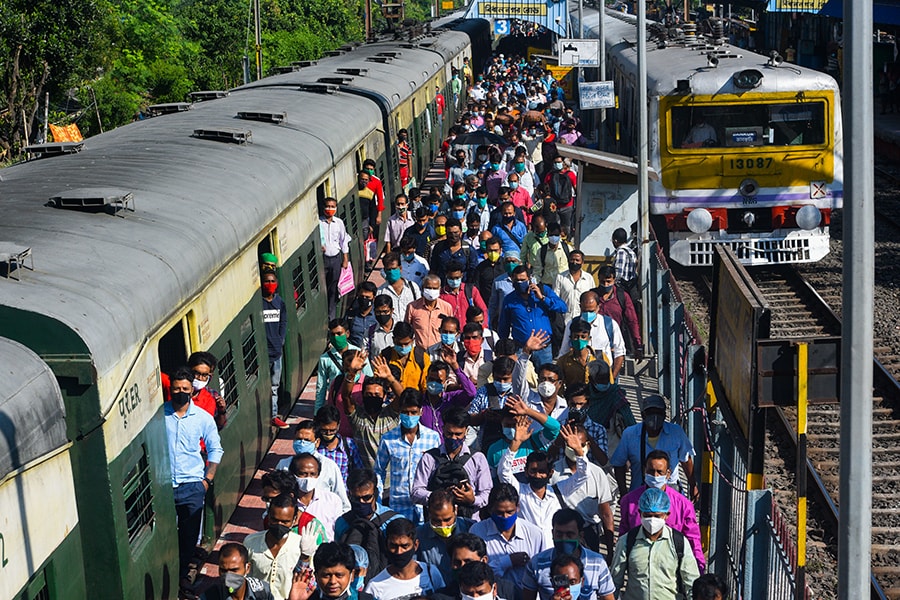
India's COVID-19 cases have plummeted, but is a new wave coming?
While some hope the worst might be over, lapsed vigilance, cold weather and the festival season could spark a resurgence
 Commuters travelling in large numbers as suburban train services resume in the state, at Bidhannagar Station on November 11, 2020 in Kolkata, India. Train services coming under the jurisdiction of the Eastern and the South Eastern Railways started during the early hours after being suspended in March due to the coronavirus outbreak in the country. Image: Samir Jana/Hindustan Times via Getty Images
Commuters travelling in large numbers as suburban train services resume in the state, at Bidhannagar Station on November 11, 2020 in Kolkata, India. Train services coming under the jurisdiction of the Eastern and the South Eastern Railways started during the early hours after being suspended in March due to the coronavirus outbreak in the country. Image: Samir Jana/Hindustan Times via Getty Images
Two months ago, India looked like a coronavirus disaster zone.
Reported infections neared 100,000 a day, deaths were shooting up, and India seemed ready to surpass the United States in total recorded cases.
Today, India’s situation looks much different. Reported infections, deaths and the share of people testing positive have all fallen significantly. By contrast, infections in Europe and the United States are surging.
But doubts persist about the reasons for India’s drop, and some researchers say the results stem at least in part from a possible change in testing, though researchers say they do not have access to complete data to really know the big picture. The experts generally agree that the number of infections has far outstripped efforts to track them in India, like elsewhere, and that infections in the country could still get considerably worse.
There has also been a shift in collective thinking, and experts worry that India has begun to lower its guard. After an intense lockdown in the spring and restrictions on social gatherings through the summer, the government has been steadily unlocking. There’s no talk of locking down again.
©2019 New York Times News Service




